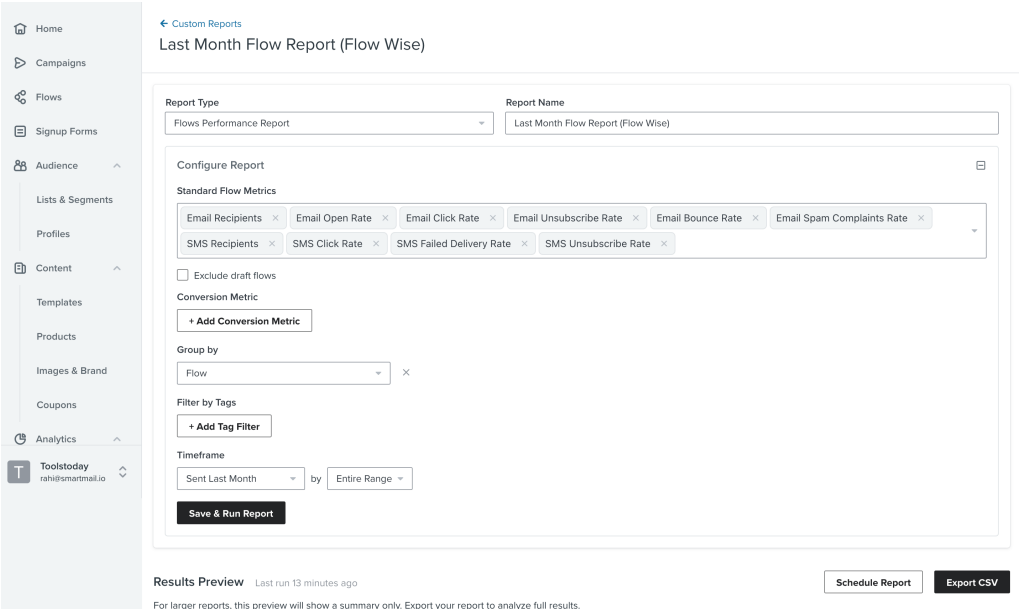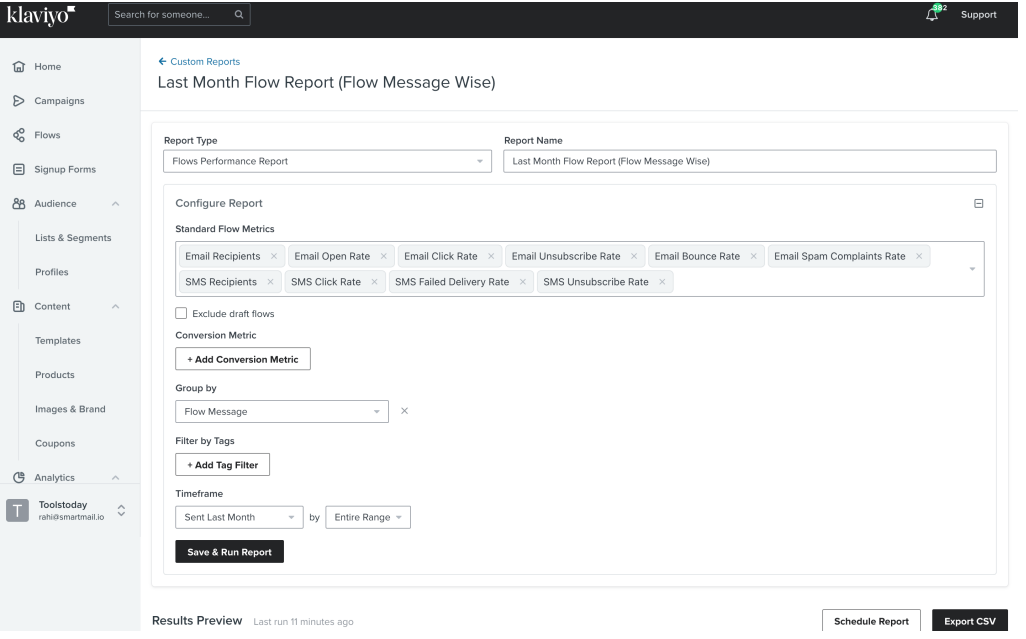Setting up your automations is just the beginning; the real game lies in optimizing them.
Whether you are a seasoned marketer or just stepping into the world of email automation, understanding how to fine-tune your processes can significantly impact your revenue.
After working with 50+ brands and looking 100+ accounts to generate $34 million in email marketing revenue. I have rarely come across a brand or an account that is optimized or looked after regularly.
It’s mostly like a one-time setup that was done six months ago or one year ago and since then there has been very little activity on automation.
So in this article, I’ll be covering:
- How to optimize your automation?
- What kind of reports do you need to run?
- What kind of sanity checks do you need to make?
- How do you keep an eye on numbers?
- What kind of actionable needs to be taken
- How do you roll them out?
So, now before we start we first need to see:
Do You Need Optimization or a New Setup?
Before delving into optimization strategies, it’s crucial to determine whether your automations (klaviyo flows) need fine-tuning or an entirely new setup.
If you find yourself with only a couple of active automations generating less than 5% of your revenue, or you’re dissatisfied with their performance, consider starting a new automation.
However, if you have 8-10 well-established automations with satisfactory results, it’s time to focus on optimization.
Automation Optimization Framework
Step 1- Prepare Two Reports
The foundation of any successful optimization strategy is data. Generate two essential reports to kickstart the process:
- Flow Report: Analyze the overall performance of your automation flows.

2. Flow Message Report: Dive into the specifics of each message within your flows.

Step 2- Run Sanity Checks
Before making any optimizations, conduct thorough sanity checks to ensure the health of your automations:-
- Check for Anomalies
Review all automations for emails sent in the last 7 days. If an email is live but has zero sent, investigate and rectify the issue promptly. - Consistency in Volume
Ensure that the volume of emails sent remains consistent across months. Any irregularities may signal potential issues.
Step 3- Compare The Benchmark
In this step, we’ll establish benchmarks to evaluate the performance of your automations. It’s crucial to have clear benchmarks for various metrics to assess whether your automations are meeting industry standards and your specific goals.
1) Overall Automation Benchmarks
- Open Rate
Aim for a 30% open rate. If your open rates are consistently below this benchmark, it indicates that your email subject lines or sender names may need optimization. - Click-Through Rate (CTR)
Target a CTR of 1.5% or higher. Low click-through rates suggest that your content or calls-to-action may not be resonating with your audience. - Unsubscribe Rate
Keep the unsubscribe rate at 0.2% or less. Higher unsubscribe rates may indicate that your content or frequency is causing disengagement. - Spam Rate
Strive for a spam rate close to zero (0.01%). High spam rates can harm your sender reputation and deliverability.
2) Welcome Flow
- Average Revenue per Recipient
The welcome series should yield an average revenue per recipient of $3.34. If it falls below this benchmark, consider revisiting the content and offers in your welcome emails. - Open Rate and Click Rate
Aim for a 45-50% open rate and a 4-5% click rate for welcome emails. If these rates are lower, analyze and optimize your welcome email content and design.
3) Cart Abandonment Flow
- Average Revenue per Recipient
Target an average revenue per recipient of $5.81 for the cart abandonment series. If it’s lower, review your cart abandonment emails to enhance their effectiveness.
4) Browse Abandonment Flow
- Average Revenue per Recipient
Strive for an average revenue per recipient of $1.95 in the browse abandonment series. If your results are below this benchmark, consider refining your browse abandonment emails.
Optimization Strategies
1) Optimize Opens
- Subject Line Analysis: If your open rates are suboptimal, analyze your email subject lines. Experiment with different approaches and identify what resonates best with your audience.
- Frequency Adjustments: If open rates are decreasing, consider adjusting the frequency of your emails. Too many emails might lead to fatigue, while too few may result in disengagement.
2) Optimize Clicks
- Block Additions: If your CTR is low, identify the specific content blocks that may be underperforming. Experiment with additional content or calls-to-action to boost engagement.
3) Optimize Time Delays
- Performance Evaluation: Assess the performance of each email in your automation journey. If the last email is not performing well, consider moving it closer in the sequence, reducing time delays, or removing it if necessary. Checkout our AB testing guide for more details.
Step 4- Grow Your Automations
Expanding and enhancing your automation strategies is essential for continued success. This step focuses on both vertical and horizontal growth to maximize the impact of your automated campaigns.
Grow Vertically
- Increase Communication in a Single Flow
If a specific email in your automation journey is proving highly successful in generating revenue (e.g., the third email), consider adding more follow-ups to capitalize on its effectiveness. - Identify Revenue-Generating Emails
Analyze the performance of each email within a flow. If a particular email is contributing significantly to the overall revenue, extending the communication sequence can enhance its impact.
Vertical Growth Strategies
Evaluate Flow Revenue– (Assess the Last Email’s Contribution)
If the last email in a flow is generating more than 10% of the total flow revenue, consider adding another follow-up after a 2-day gap. This ensures that you’re maximizing revenue from a successful email in the sequence.
Grow Horizontally
- Cover More Touchpoints
Examine the complete customer journey to identify additional touchpoints where marketing automation can be implemented. This might involve expanding automation beyond the typical welcome and cart abandonment flows. - Analyze the Customer Journey
Understand the various stages a customer goes through, from awareness to conversion. Identify touchpoints where automated communication can provide value and drive engagement.
Horizontal Growth Strategies
Include More Touchpoints (Examine the Customer Journey)
Take a holistic view of the customer journey. Identify additional opportunities to incorporate automated communication at various stages, ensuring that you’re present throughout the entire customer lifecycle.
Conclusion
Optimizing your automations is not a one-time task; it’s an ongoing process that requires vigilance and adaptation.
By following a comprehensive optimization framework and regularly assessing key metrics, you can ensure that your automations not only meet but exceed expectations, ultimately leading to increased revenue and customer engagement.
Remember, the key to success lies in a dynamic and responsive approach to automation management.
